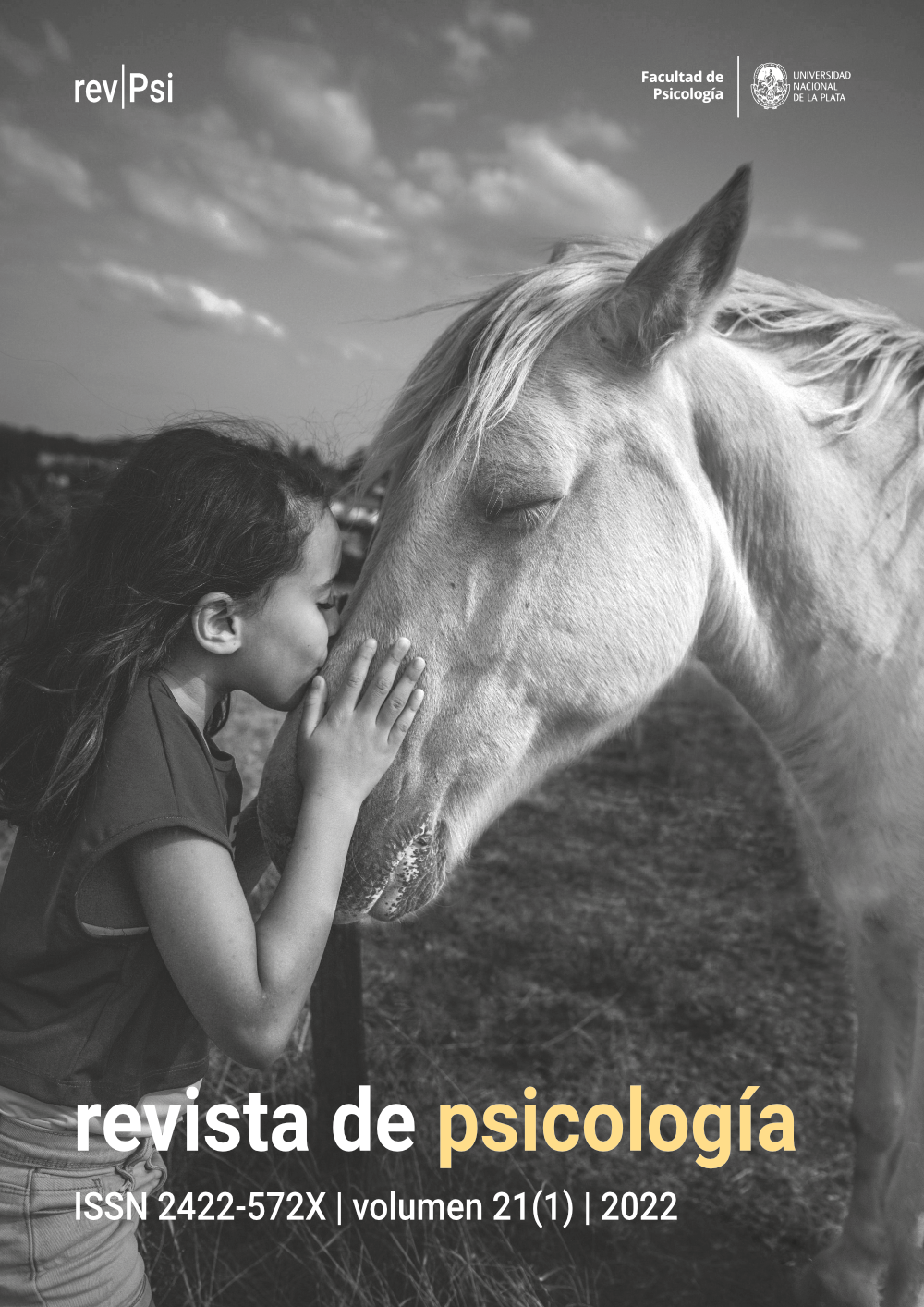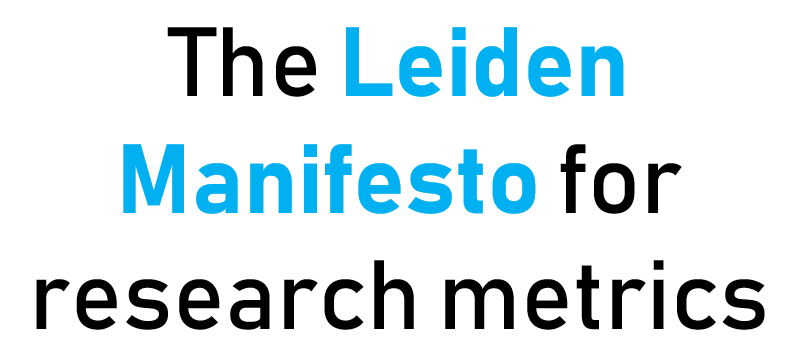Do gender and temperament influence changes in the emotional expressiveness of Chilean infants? A longitudinal study
DOI:
https://doi.org/10.24215/2422572Xe130Keywords:
emotional expressivity, temperament, gender, infancy, socializationAbstract
Emotional expressiveness is relevant for healthy functioning, and in the early years, both maturational and cultural aspects are configuring it. This study analyzed the change in emotional expressiveness in 99 children between 12, 18, 24 and 30 months of age, considering the ability to express pleasure and frustration and its intensity. The children's emotional expressiveness was assessed against tasks that elicited pleasure and frustration, and the IBQ-R-VSF was applied to evaluate temperament. It was observed that over time the number of children who expressed frustration decreased significantly. Furthermore, the intensity with which the children expressed pleasure and frustration also showed a significant reduction. Profiles were obtained that combined children's gender and temperament, and that showed different patterns of change in the emotional expressiveness of the children. These results are discussed from the perspective of the socialization of positive and negative emotions in Chilean culture.
Downloads
Metrics
References
Adimark (2000). El nivel socioeconómico ESOMAR; Manual de aplicación. www.microweb.cl/idm/documentos/ESOMAR.pdf
Akin, A., Satici, S. A., y Kayis, A. R. (2012) Emotional expressivity and submissive behavior. Journal of Education and Instructional Studies in the World, 2(1), 1-6.
Burns, K. C., y Friedman, S. L. (2012). The benefits of emotional expression for math performance. Cognition & Emotion, 26(2), 245-251. https://doi.org/10.1080/02699931.2011.577564
Calkins, S. D., y Mackler, J. S. (2011). Temperament, emotion regulation, and social development. En M. K. Underwood & L. H. Rosen (Eds.), Social development: Relationships in infancy, childhood, and adolescence (pp. 44–70). Guilford Press.
Camras, L. A., y Fatani, S. S. (2010). The development of facial expressions. Current Perspectives on infant emotions. En M. Lewis, J. M. Haviland-Jones y L. Feldman (Eds.), Handbook of emotions (3a ed, pp. 291-303). The Guilford Press.
Carstensen, L. L., Pasupathi, M., Mayr, U., y Nesselroade, J. R. (2000). Emotional experience in everyday life across the adult life span. Journal of Personality and Social Psychology, 79(4), 644–655. https://doi.org/10.1037/0022-3514.79.4.644
Chaplin, T. y Aldao, A. (2013). Gender differences in emotion expression in children: A meta-analytic review. Psychological Bulletin, 139(4), 735-765. https://doi.org/10.1037/a0030737
Chaplin, T. M., Cole, P. M., y Zahn-Waxler, C. (2005). Parental socialization of emotion expression: Gender differences and relations to child adjustment. Emotion, 5(1), 80-88. http://dx.doi.org/10.1037/1528-3542.5.1.80
Charbonneau, G., Bertone, A., Lepore, F., Nassim, M., Lassonde, M., Mottron, L., y Collignon, O. (2013). Multilevel alterations in the processing of audio–visual emotion expressions in autism spectrum disorders. Neuropsychologia, 51(5), 1002-1010. https://doi.org/10.1016/j.neuropsychologia.2013.02.009
Charlesworth, W. R., y Kreutzer, M. A. (2006). Facial expressions of infants and children. En P. Ekman (Ed.), Darwin and facial expression (1a ed, pp. 91-168). Malor Books.
Collier, G., y Collier, G. J. (2014). Emotional expression. Psychology Press.
Corrales, E. (2011). El lenguaje no verbal: Un proceso cognitivo superior indispensable para el ser humano. Revista Comunicación, 20(1), 46–51.
Dobbs, J. L., Sloan, D. M., y Karpinski, A. (2007). A psychometric investigation of two self-report measures of emotional expressivity. Personality and Individual Differences, 43(4), 693-702. https://doi.org/10.1016/j.paid.2007.01.010
Domes, G., Winter, B., Schnell, K., Vohs, K., Fast, K., y Herpertz, S. C. (2006). The influence of emotions on inhibitory functioning in borderline personality disorder. Psychological Medicine, 36(8), 1163-1172. https://doi.org/10.1017/S0033291706007756
Farkas, C., Santelices, M. P., y Himmel, E. (2011). Análisis desde una perspectiva evolutiva y cultural del uso de la comunicación gestual en infantes y pre-escolares, en la expresión y comprensión de los estados internos y su impacto en el desarrollo socio-emocional de los niños(as). Proyecto FONDECYT 1110087, Escuela de Psicología, Pontificia Universidad Católica de Chile, Santiago, Chile.
Farkas, C., y Vallotton, C. (2016). Differences in infant temperament between Chile and the US. Infant Behavior and Development, 44, 208-218. https://doi.org/10.1016/j.infbeh.2016.07.005
Fernández, I., Carrera, P., Sánchez, F. y Páez, D. (2001). Prototipos emocionales desde una perspectiva cultural. Revista Española de Motivación y Emoción, 4(8-9), 115-125.
Frith, C. (2009). Role of facial expressions in social interactions. Philosophical Transactions of the Royal Society B: Biological Sciences, 364(1535), 3453-3458. https://doi.org/10.1098/rstb.2009.0142
Gaias, L. M., Räikkönen, K., Komsi, N., Gartstein, M. A., Fisher, P. A., y Putnam, S. P. (2012). Cross-cultural temperamental differences in infants, children, and adults in the United States of America and Finland. Scandinavian Journal of Psychology, 53(2), 119-128. https://doi.org/10.1111/j.1467-9450.2012.00937.x
Han, H. S., y Thomas, M. S. (2010). No child misunderstood: Enhancing early childhood teachers' multicultural responsiveness to the social competence of diverse children. Early Childhood Education Journal, 37(6), 469-476. https://doi.org/10.1007/s10643-009-0369-1
Herndon, K. J., Bailey, C. S., Shewark, E. A., Denham, S. A., y Bassett, H. H. (2013). Preschoolers’ emotion expression and regulation: Relations with school adjustment. The Journal of Genetic Psychology, 174(6), 642-663. https://doi.org/10.1080/00221325.2012.759525
Hofstede, G. (2001). Culture's consequences: Comparing values behaviors, institutions and organizations across nations. (2a ed). Sage.
Holodynski, M., y Friedlmeier, W. (2006). Development of emotions and their regulation: A socio-culturally based internalization model. Kluwer Academic.
Izard, C. E. (2011). Forms and functions of emotions: Matters of emotion–cognition interactions. Emotion Review, 3(4), 371-378. https://doi.org/10.1177/1754073911410737
Kang, S. M., Shaver, P. R., Sue, S., Min, K. H., y Jing, H. (2003). Culture-specific patterns in the prediction of life satisfaction: Roles of emotion, relationship quality, and self-esteem. Personality and Social Psychology Bulletin, 29(12), 1596-1608. https://doi.org/10.1177/0146167203255986
Keller, H., y Otto, H. (2009). The cultural socialization of emotion regulation during infancy. Journal of Cross-Cultural Psychology, 40(6), 996-1011. https://doi.org/10.1177/0022022109348576
Kohut, S. A., Riddell, R. P., Flora, D. B., y Oster, H. (2012). A longitudinal analysis of the development of infant facial expressions in response to acute pain: Immediate and regulatory expressions. PAIN, 153(12), 2458-2465. https://doi.org/10.1016/j.pain.2012.09.005
Krakowski, M. I., De Sanctis, P., Foxe, J. J., Hoptman, M. J., Nolan, K., Kamiel, S., y Czobor, P. (2016). Disturbances in response inhibition and emotional processing as potential pathways to violence in schizophrenia: a high-density event-related potential study. Schizophrenia Bulletin, 42(4), 963-974. https://doi.org/10.1093/schbul/sbw005
Kring, A. M., Smith, D. A., y Neale, J. M. (1994). Individual differences in dispositional expressiveness: development and validation of the Emotional Expressivity Scale. Journal of Personality and Social Psychology, 66(5), 934-949. https://doi.org/10.1037/0022-3514.66.5.934
Lewis, M. (2010). The emergence of human emotions. En M. Lewis, J. M. Haviland-Jones, y L. Feldman (Eds.), Handbook of emotions (3a ed, pp. 304-319). The Guilford Press.
Losonczy-Marshall, M. (2008). Age differences in intensity of emotional expression between younger and older infants. Perceptual and Motor Skills, 107(3), 800-810. https://doi.org/10.2466/pms.107.3.800-810
Losonczy-Marshall, M. (2014). Stability in temperament and emotional expression in 1- to 3-year-old children. Social Behavior and Personality: An International Journal, 42(9), 1421–1430. https://doi.org/10.2224/sbp.2014.42.9.1421
MacNeill, L. A., y Pérez‐Edgar, K. (2019). Temperament and emotion. The Encyclopedia of Child and Adolescent Development, 1-12. https://doi.org/10.1002/9781119171492.wecad180
Martín-Baró, I. (1998). El fatalismo como identidad cognitiva. En I. Martín-Baró (Ed.), Psicología de la liberación (pp. 39-130). Trota.
Manstead, A., y Oatley, K. (2000). Gender and emotion: Social psychological perspectives. Cambridge University Press.
Mesman, J., Oster, H., y Camras, L. (2012). Parental sensitivity to infant distress: What do discrete negative emotions have to do with it? Attachment and Human Development, 14(4), 337–348. https://doi.org/10.1080/14616734.2012.691649
Morris, A. S., Silk, J. S., Morris, M. D., Steinberg, L., Aucoin, K. J., y Keyes, A. W. (2011). The influence of mother–child emotion regulation strategies on children's expression of anger and sadness. Developmental Psychology, 47(1), 213-225. https://doi.org/10.1037/a0021021
Muzard, A., Kwon, A. Y., Espinosa, N., Vallotton, C. D., y Farkas, C. (2017). Infants' emotional expression: Differences in the expression of pleasure and discomfort between infants from Chile and the United States. Infant and Child Development, 26(6), 1-12. https://doi.org/10.1002/icd.2033
Nelson, K., y Fivush, R. (2004). The emergence of autobiographical memory: a social cultural developmental theory. Psychological Review, 111(2), 486-511. https://doi.org/10.1037/0033-295X.111.2.486
Oster, H. (2005). The repertoire of infant facial expressions: An ontogenetic perspective. En J. Nadel y D. Muir (Eds.), Emotional development (pp. 261-292). Oxford University Press.
Patterson, G. R. (1976). The aggressive child: Victim and architect of a coercive system. En E. J. Mash, L. A. Hamerlynck y L. C. Handy (Eds.), Behavior modification and families (pp. 267-316). Brunner/Mazel.
Pérez Nieto, M. Á., y Redondo Delgado, M. M. (2006). Procesos de valoración y emoción: Características, desarrollo, clasificación y estado actual. REME, 9(22), 8-55.
Putnam, S. P., Helbig, A. L., Gartstein, M. A., Rothbart, M. K., y Leerkes, E. (2014). Development and assessment of short and very short forms of the Infant Behavior Questionnaire–Revised. Journal of Personality Assessment, 96(4), 445-458. https://doi.org/10.1080/00223891.2013.841171
Revueltas, A., Pale, M., y Ramírez, M. J. (2016). Análisis del reconocimiento de la expresión facial emocional en niños y adolescentes mexicanos. Revista de Psicología y Educación, 15(1), 53-74.
Rothbart, M. K. (2012). Advances in temperament. En M. Zentner y R. L. Shiner (Eds.). Handbook of temperament, (pp. 3-20). The Guilford Press.
Slobodskaya, H. R., y Kozlova, E. A. (2016). Early temperament as a predictor of later personality. Personality and Individual Differences, 99, 127-132. https://doi.org/10.1016/j.paid.2016.04.094
Smith, P. B., y Bond, M. H. (1993). Social psychology across cultures. Harvester.
Smith, J. D., Dishion, T. J., Shaw, D. S., Wilson, M. N., Winter, C. C., y Patterson, G. R. (2014). Coercive family process and early-onset conduct problems from age 2 to school entry. Development and Psychopathology, 26(4 Pt 1), 917–932. https://doi.org/10.1017/S0954579414000169
Sugg Basset, M. (2016). Influences of temperament, symbolic gesture, and caregiver beliefs on infant emotional expression [tesis de maestría inédita]. University of Arkansas.
Tortello, C., y Becerra, P. C. (2017). ¿Cómo se estudian las emociones en los niños? Técnicas conductuales y fisiológicas para evaluar las respuestas emocionales durante la infancia. Cuadernos de Neuropsicología, 11(3), 1-20. https://doi.org/10.7714/CNPS/11.3.401
Trommsdorff, G., y Cole, P. M. (2011). Emotion, self-regulation, and social behavior in cultural contexts. The Guilford Press.
Zubieta, E., Fernández, I., Vergara, A. I., Martínez, M. D., y Candia, L. (1998). Cultura y emoción en américa. Boletín de Psicología, 61, 65–89.
Downloads
Published
How to Cite
Issue
Section
License
Copyright (c) 2022 Jorge Corral, Colomba Mahns, Fernanda Pereira, Carolina Coloma, Javiera Avilés, Chamarrita Farkas

This work is licensed under a Creative Commons Attribution 4.0 International License.
![]()
Authors who publish in this journal accept the following conditions:
- Authors retain the copyright and assign the right of first publication to the journal, with the work registered under a Creative Commons attribution license (CC-BY), which allows third parties to use what is published whenever they mention the authorship of the work and the first publication in this magazine.
- Authors can make other independent and additional contractual agreements for the non-exclusive distribution of the article published in this journal (e.g., include it in an institutional repository or publish it in a book) as long as they clearly indicate that the work was published for the first time in this magazine.
- Authors are allowed and encouraged to publish their work on the Internet (e.g., on institutional or personal webpages) before and during the review and publication process, as it can lead to productive exchanges and greater and faster dissemination of published work (see The Effect of Open Access ).





































